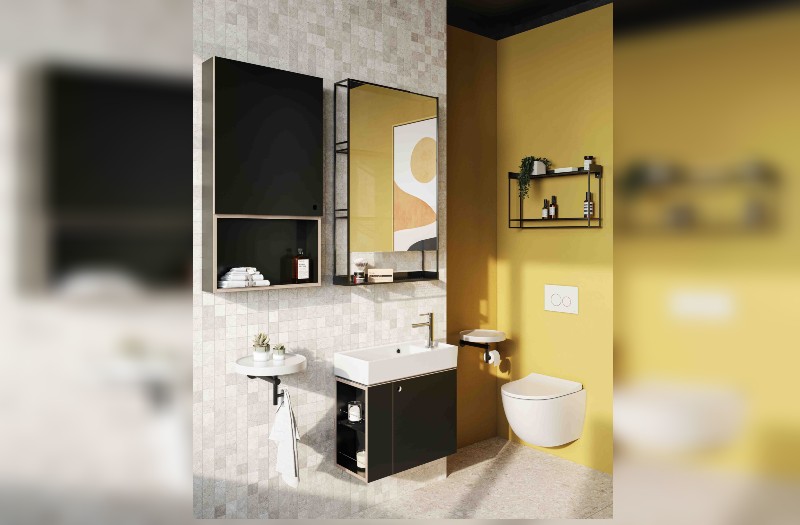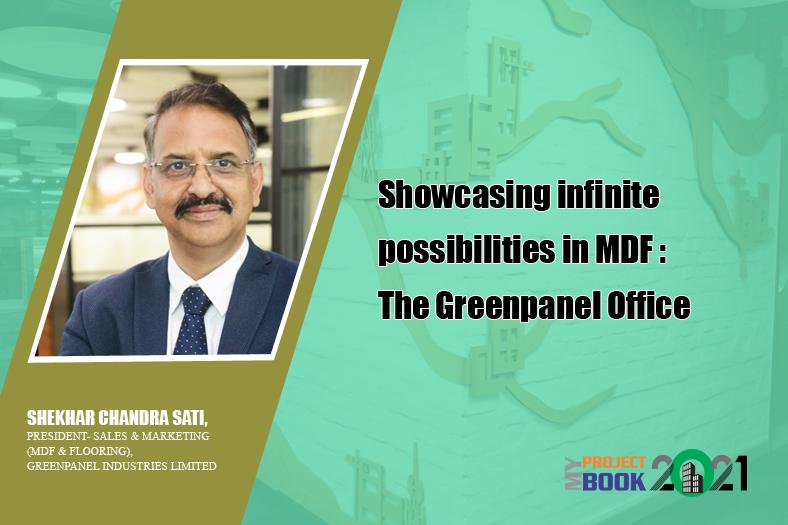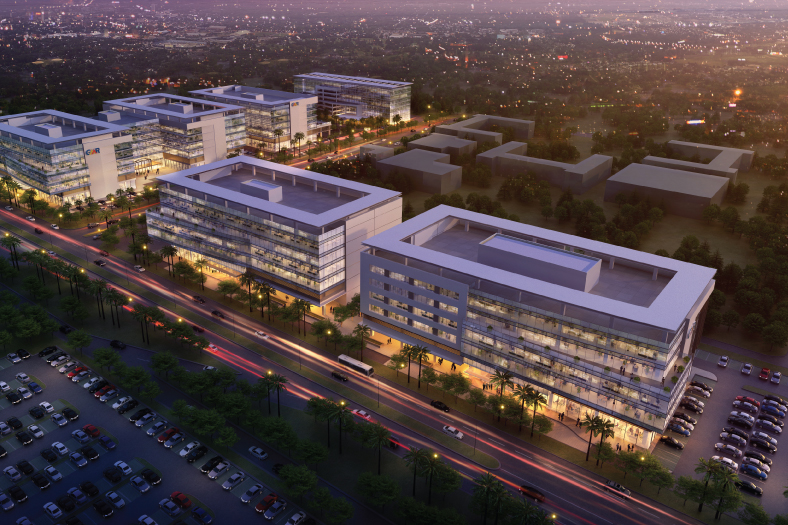The exponential increase in human population and rising energy demands have put great pressure on our limited natural resources. Although many countries are dependent on fossil fuel imports to meet their soaring energy needs, about 1.8 billion people in the world still lack access to electricity. In India alone, more than 300 million people lack access to electricity. It is projected that the world energy consumption and related carbon emissions will grow by about 56 per cent and 46 per cent respectively, between the years 2010 and 2040. Thus, energy security is critical for an inclusive and sustainable future. Buildings are one of the largest consumers of energy, accounting for over 30 per cent of the total energy consumed in India. More than 40 per cent of energy in buildings is used by cooling and heating systems. Studies show that two-thirds of the commercial buildings in India of 2030 are yet to be built. This offers a brilliant opportunity for Indian corporates to create the most efficient structures in the world.IT giant Infosys has set goals of becoming carbon neutral, achieving 50 per cent reduction in per capita energy and water consumption by 2018 against the baseline year 2008, and meeting its entire electricity consumption from renewable sources, among other goals.
Infosys has set new benchmarks in energy performance of buildings through smart buildings, innovative technologies and building automation. The high-performance buildings at Infosys are examples that demonstrate the power of modern technology to design efficient buildings at lower costs. Its buildings consume one-third of the energy consumed by average buildings at no extra capital costs. Over the last seven years, Infosys has avoided consumption of about 880 million units of electricity.
Recently, the company has received the LEED Platinum rating for its Equinox building in Bengaluru. The building has an efficient envelope with insulated walls and roof, optimised window-wall ratio of less than 30 per cent, and high performance glazing with adequate shading. It has daylight and vision panels, which let in a good amount of natural light with little or no glare, removing the requirement to switch on lights during the day. They ensure over 90 per cent of occupied spaces have natural light, adding to higher comfort and productivity and creating a natural working environment for employees. The building has highly efficient lighting controls with the use of day lighting and occupancy sensors. The operating lighting power density is less than 0.18 W/sq. ft. Also, the air conditioning system is highly efficient with variable speed drives on all equipment and by the use of electronically commutated fans. Use of direct expansion units have been completely eliminated by using chilled water based systems for all applications in the building.
Plumbing efficiencyThe building design demonstrates about 49 per cent reduction in energy consumption compared to the American Society of Heating, Refrigeration, and Air-Conditioning Engineers (ASHRAE) baseline standards. Also, with the use of efficient plumbing fixtures, recycle and reuse of waste water (reused for flushing, landscaping, and in cooling towers), it has been able to reduce water use by over 48 per cent compared to LEED standards. The Energy Performance Index (EPI) of this building is expected to be as low as 81 kwh/sq. m/year.
Infosys believes in pushing boundaries of innovation, while creating environmental friendly structures. Its buildings have become live labs to test innovative energy efficient technologies. For example, the Infosys M&C building in Bengaluru is the first building in India with the radiant panel-based cooling system. In this system, pipes are embedded in panels of modular sizes like ceiling tiles, and are then interconnected to allow water flow. Cooling is achieved when the occupants, computers, lighting and equipment radiate directly to the cold ceiling. Fresh air is supplied through an air system that maintains pleasant indoor air quality. This system is the solution for cases with specific ceiling designs and retrofits in existing buildings to achieve considerable energy reduction.
Cool idea!The latest innovation in this building is the implementation of ‘Radiflux’ for cooling. With high quality engineering, Infosys has developed Radiflux radiant panels in-house which use chilled water for cooling. These panels are two times more efficient than other products available in the market, less than half the cost, and take 50 per cent less time for installation. This technology can be deployed at a large scale and has the potential to transform the way cooling is done in India. Infosys has patents pending in India, US and European for this product.
Maximum natural lightThe building has been designed with a highly efficient building envelope, minimising heat ingress while allowing in maximum natural light. Windows with daylight and vision panels ensure that over 90 per cent of the occupied space has natural light and access to outside views.
Technology at its bestAnother innovative aspect of this building are the self-powered wireless switches and sensors, reducing the cost and time of installation and enabling efficient energy use. These ‘peel-and-stick’ switches and sensors harvest energy from the indoor environment without any use of electricity. In addition, all equipment in the chiller plant room has variable speed drives that optimise energy consumption based on occupancy, weather, and other variable parameters. Oil-free magnetic chillers are installed for higher efficiency. The building’s roof is white thus reduces the heat-island effect and in turn reduces the cooling requirement.
Harvesting solar energySolar photovoltaic (PV) systems are installed on the rooftop to harvest solar energy. The unique feature is that four different kinds of solar PV technologies are being compared on the same roof. This project will analyse the effects of different weather conditions on the performance of PV technologies and is expected to meet about 10 per cent of the electricity requirements of this building.
Water efficientInfosys M&C building has demonstrated significant savings in water through water-efficient fixtures including pressure compensating aerators, waterless urinals, etc. Additionally, rainwater is harvested through rooftop harvesting systems as well as injection wells. Rainwater from the roof is directed into a storage tank, filtered and used for potable purposes. Rainwater is also directed deep into the ground through an in-house injection well, thereby increasing the groundwater level. In fiscal 2015, during the monsoon months, nearly half of its potable water requirement was met from harvesting rainwater. Further, sewage treatment plant recycles 100 per cent wastewater generated, which is reused for flushing, landscaping and in cooling towers. Dual plumbing system provides separate water piping for the supply of potable and non-potable water.
Integrated BMSInfosys has implemented Building Management System (BMS) to continuously monitor, manage, and optimise building operations and ensure efficient energy use. This has enhanced operative effectiveness by improving diagnostic capabilities and also giving recommendations for new building designs.
A Central Command Centre (CCC) is set up in this building that monitors each system in real time to help identify and correct inefficiencies. The CCC connects all BMS and manages energy and other critical operations across the campuses from one single place. This has immensely helped to improve operational efficiency and eliminate wastage.
AchievementAll these interventions have led to considerable resource savings. The building design demonstrates nearly 42 per cent reduction in energy consumption compared to the ASHRAE baseline standards and reduction in water usage by over 71 per cent compared to LEED standards. The EPI of the building is about 81 kwh/sq. m/year, in spite of parts of the building being occupied round the clock.
Authored by__Guruprakash Sastry, Regional Manager- Infrastructure, Infosys
Cookie Consent
We use cookies to personalize your experience. By continuing to visit this website you agree to our Terms & Conditions, Privacy Policy and Cookie Policy.









